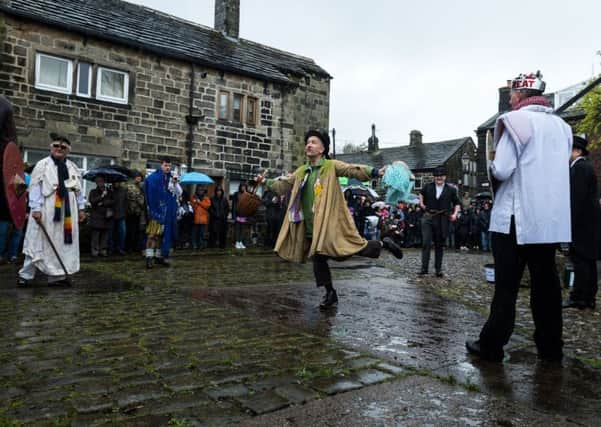Traditional Easter village show goes back to the 1500s


Villagers turn out in force to see the Pace Egg play in the village of Heptonstall near Halifax in West Yorkshire.
It is performed each year in Weavers Square on Good Fridays, attracting hundreds of visitors to the village.
Advertisement
Hide AdAdvertisement
Hide AdThe origins are uncertain, but some version of the plays have undoubtedly been performed over many hundreds of years.
In the play St George takes on contenders such as Bold Slasher, the Black Prince of Paradine and Hector.
The costumes — in particular the strange headgear comprising a towering edifice garlanded with flowers, peculiar to the Calder Valley — are as much a part of the fun as the action, where violent sword fights predominate but, as ever, good triumphs over evil.
David Burnop, who plays The Doctor, performed it as a child and revived the current Heptonstall version in 1979 after it had not been performed in a decade.
Advertisement
Hide AdAdvertisement
Hide AdHe said: “It was a thing that at one time any boy would have done, often to get a little money to go to the local fair which is reflected at the end of our play which refers to ‘taking our bonnie lass to Todmorden Fair.’ It was a bit like doing a Penny for the Guy.”
He thinks it is similar to May Pole dancing traditionally done by village girls but says its origins have been lost.
He said: “The Pace Egg play has disappeared and been restored so many times.
“There’s nothing really recorded before the 1500s.
“Before that it’s all folklore history theory, the theory being it wasn’t originally a play but a good luck ceremony for the new season.”